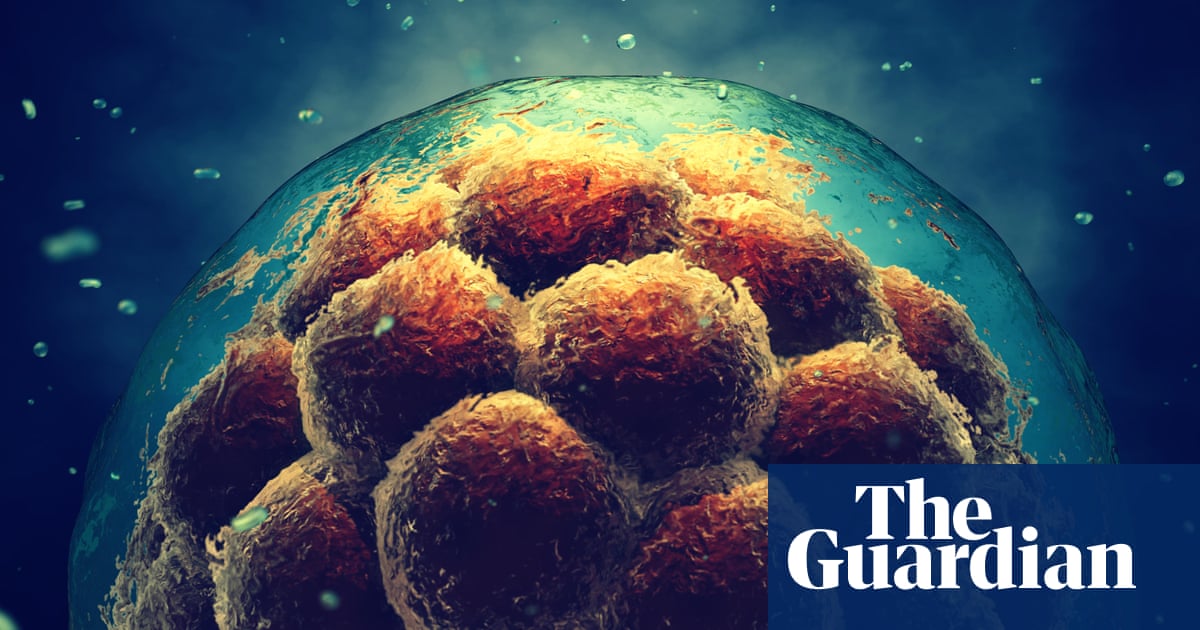
Scientists are calling for a review of the 14-day rule on embryo research, saying that extending the limit could help uncover the causes of recurrent miscarriage and congenital conditions.
Until now, scientists studying the earliest stages of life have been restricted to cultivating embryos up to the equivalent of 14 days of development. They can then pick up the path of development several weeks later, on pregnancy scans and from material donated from terminations.
But this leaves a “black box” period from two to around four weeks of development that has never been directly studied and which scientists say could hold the key to improving fertility treatments and the understanding of a variety of birth defects.
With an overhaul of fertility laws on the horizon and rapid scientific advances under way, scientists are calling for a review of the 14-day rule.
Dr Peter Rugg-Gunn, of the Babraham Institute in Cambridge , said: “The period from two weeks to four weeks has been labelled the black box of embryo development. There’s no practical way to study this currently so our knowledge is really limited. Studying embryos beyond the 14-day limit could bring benefits to patients. The sooner it could be allowed, the sooner patients could benefit in the UK.”
Potential benefits include finding the causes of implantation failure, where the embryo does not embed in the womb lining causing miscarriage, and the origins of congenital heart defects, which affect about one in 100 births and are estimated to be responsible for about 40% of prenatal deaths.
“My view is that it’s important for people to understand what the benefits could be,” added Rugg-Gunn, who stopped short of directly calling for an extension of the limit as part of sweeping proposals by the Human Fertilisation and Embryology Authority (HFEA) to modernise the law.
The UK’s 14-day rule was first proposed in the 1984 Warnock report on the ethics and regulation of IVF technology, and has been law since 1990. It bans the cultivation of embryos beyond 14 days of development or before the formation of the primitive streak (which sets up the body’s axis) and was intended to balance the potential medical benefits of research with the special status of the human embryo.
In 1990, though, the limit was theoretical because scientists could not maintain embryo development in the lab beyond a few days. In the past five years, this has changed and a growing number of labs around the world are able to closely replicate development right up to the legal limit.
“We are at the point now where technically these experiments are probably possible,” said Rugg-Gunn. “There is a very high likelihood that if research could continue, the new knowledge would have benefits to health, particularly to understanding the causes of recurrent miscarriage.”
Just beyond day 14, gastrulation occurs, a momentous step in which the embryo morphs from a simple ball of cells into three distinct layers of tissue that set up a primitive body plan. “It’s one of the most important steps in all of development, but this has never been studied or visualised before,” Rugg-Gunn said.
Implantation of the embryo into the womb lining (endometrium) happens between day six and 12, but the process continues – and can go wrong – beyond day 14, and is thought to be a common reason for IVF treatment not working.
Prof Kathy Niakan, a developmental biologist at the University of Cambridge, said: “There’s an immunological interaction that’s really unique at that time of pregnancy. There’s this really interesting question of why, in some cases, the maternal cells and the foetal cells can’t coexist without some sort of attack or failure.”
During the third week, cells continue to differentiate and the first heart cells are formed. It is thought that a high proportion of congenital heart conditions arise during this very early period of development. Between day 21 and 28, the neural tube (the embryonic precursor to the central nervous system) forms and closes. Spina bifida is caused by a failure of the neural tube to close properly, but the precise steps have not been observed directly. From around four weeks, scientists begin to get insights into development from pregnancy scans and embryos donated from terminations.
Some argue that scientists may be overstating the potential clinical benefits of cultivating embryos beyond 14 days and question whether the ethical arguments that underpin the legal limit have really changed.
“Limits are meaningless if they don’t actually prevent you doing something,” said Prof Anna Smajdor, a philosopher at the University of Oslo. “Now [scientists] can do this stuff, they don’t want to be limited. The risk is that it’s making a mockery of the idea that these are moral cutoff points that are the product of honest, moral deliberation with scientists.”
It is now more clear than it was in 1990 that an embryo does not have a functional nervous system at 28 days, but Smajdor said the ethics at play “are not necessarily reducible to ‘does it feel pain?’. Even without a religious perspective, it’s possible to think embryos have a moral value because they have the potential to become human beings. There is a symbolic component to it.”
Others suggest that with scientific advances, the onus has shifted. “Human embryos … are a scarce and precious resource,” said Sarah Norcross, the chief executive of the charity Progress Educational Trust. “Is it right that scientists are legally obliged to stop studying these embryos in the laboratory after 14 days, when we could learn so much more from them, and when we could use this knowledge to better understand pregnancy loss and disease?”
Many believe that with reforms to the law on the way, it is at least time to reopen the debate. “Having the discussion doesn’t mean the rule will change,” Niakan said. “It means having an open, two-way dialogue about what could be gained, what the potential risks are and asking how do we feel about that.”












